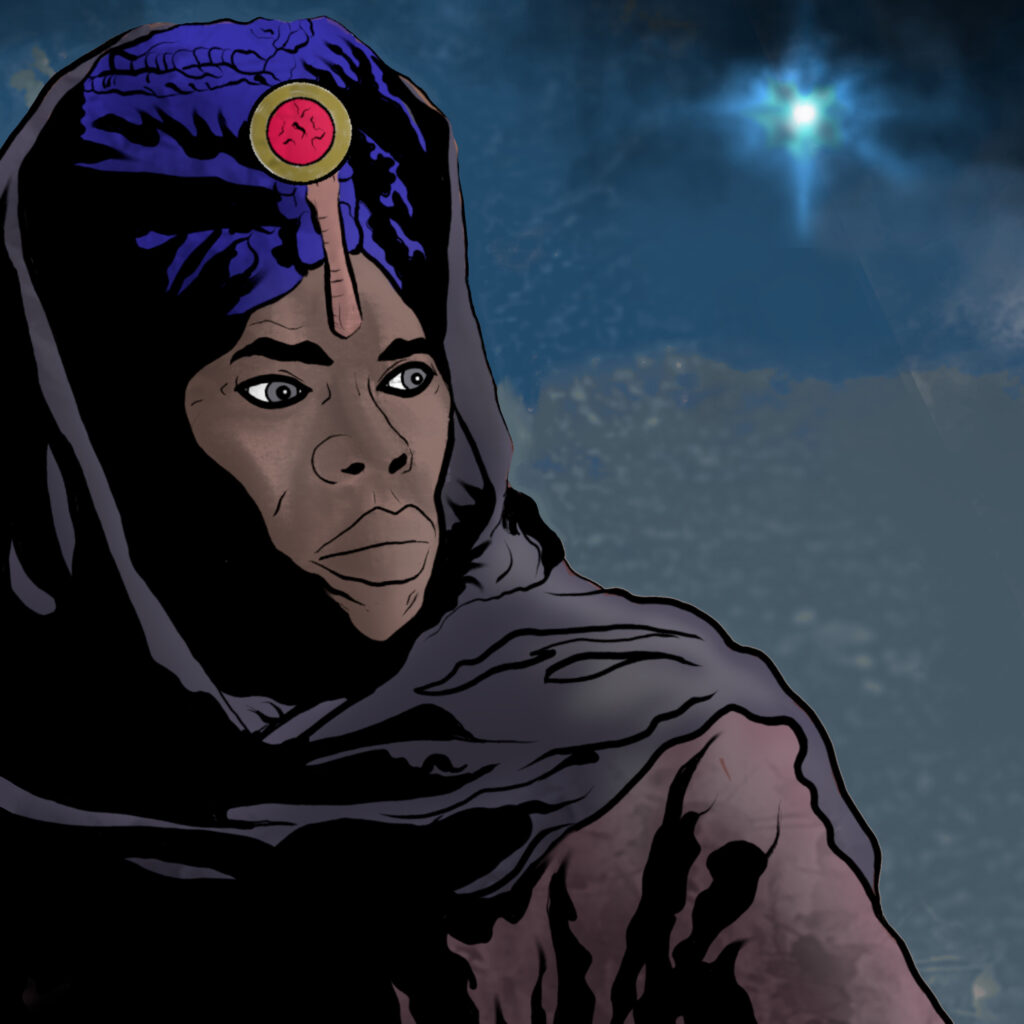That’s in Matthew 2:1-12. But if you read it, it probably won’t be what you expect. The book of Matthew never actually says how many wise men visited Jesus. It doesn’t even give their names.
Really, most of the details that we know about the wise men were added well after the Bible was written. For example, the Bible says nothing about them being kings. (And as I mentioned, it doesn’t specify that there were three of them. This idea probably came from them giving Jesus three gifts.)
But, over time, Christian legend added specifics to the story, making it into the whole We Three Kings story that most of us are familiar with. At some point, the wise men were even given names: Gaspar (or Caspar), Melchior, and Balthazar.
So, when the DAM’s Senior Interpretive Specialist Lauren Thompson invited me to write and draw a short graphic novel story about Balthazar, my mind started racing, imagining what I could do with his tale!
Balthazar is often described as being from Africa (or being Arabian, depending on what you’re reading). The fascinating thing is that, for centuries, in Christian art, Balthazar was painted as a Caucasian man with an African servant! Crazy, right?
So, it occurred to me that it’d be dope to explore two themes:
1. What would it be like to tell the story of meeting an infant Jesus, from Balthazar’s point of view? Like, what kinds of feelings might he have had in that situation?
2. What would it be like for Balthazar to observe how he’s been depicted throughout centuries of art, and what would his reactions to that be?
The result of this line of thinking is The Return of Balthazar, a short, kinda science-fiction graphic novel story that I wrote and illustrated, to be part of the Saints, Sinners, Lovers, and Fools exhibit.
So, I wrote the script, and then I illustrated it in a free art program called GIMP. I began with rough sketches, then moved onto more detailed drawings, and finally, I digitally painted it to get the colors and textures that I wanted.
I don’t think I’m the fastest illustrator, so I probably spent 20 hours on the art for each page of the story. Then I added the lettering to the pages, which was a little more challenging in the Spanish version, because comic book fonts don’t always come with Spanish punctuation—so I ended up adding that manually.
Anyway, I’ve always loved the ability of fiction (and particularly graphic novels) to explore different possibilities and perspectives in the world, and I’m honored that the Denver Art Museum asked me to collaborate with them again. In the exhibit, you’ll see the English version of the story, followed by the Spanish version.
If you want to buy your own copy of the story, there will be books in the Denver Art Museum gift shop, and if you can’t find it there, it’ll be available on my website.
And yo, I understand that religion can be a very touchy subject. With this story, I wanted to honor the Christian tradition that I was raised in, while exploring aspects of this very familiar story from a new angle.
Hey, if you make it to the exhibit, or buy the book, then thanks for taking the time to read it!
This content was originally published here.



